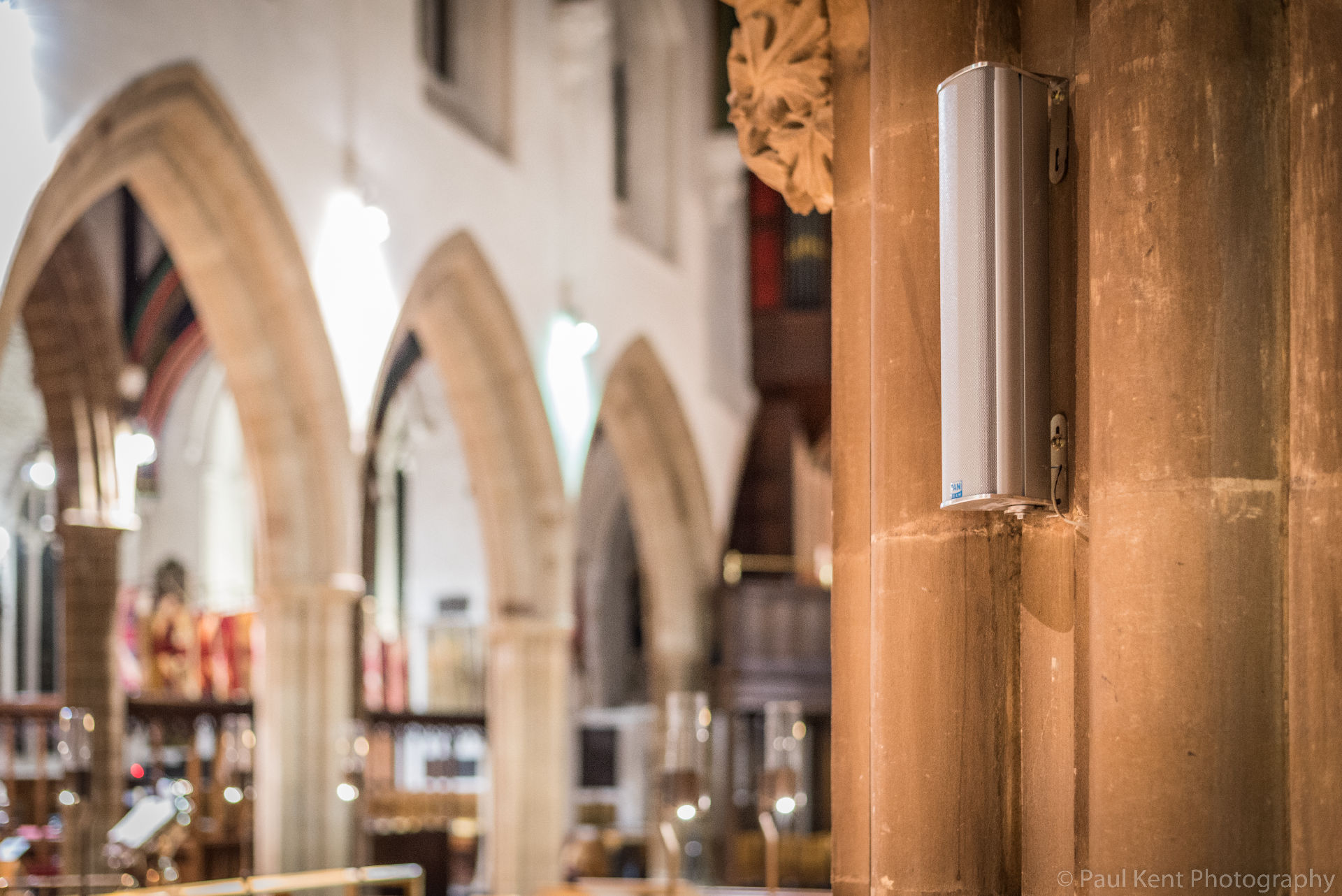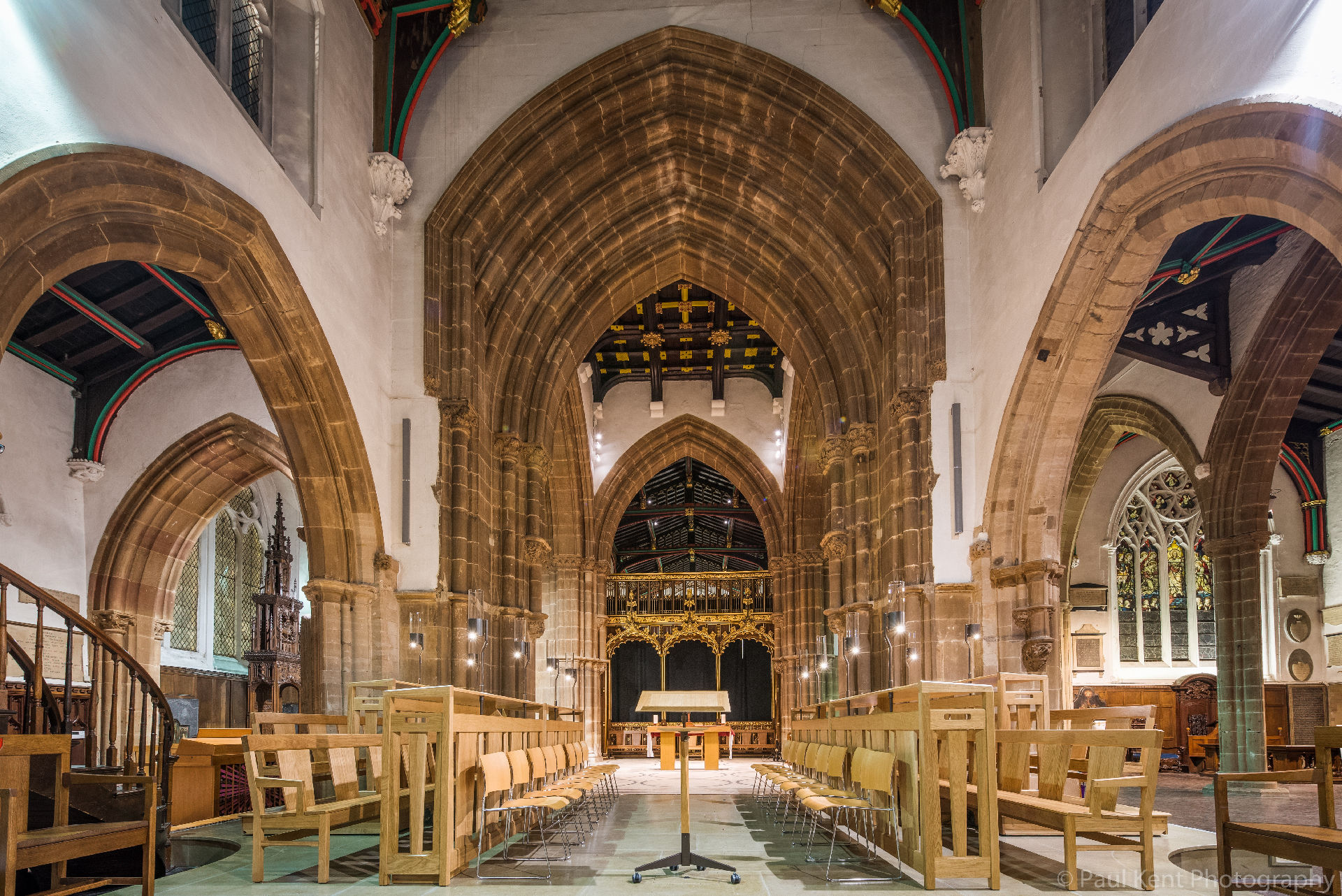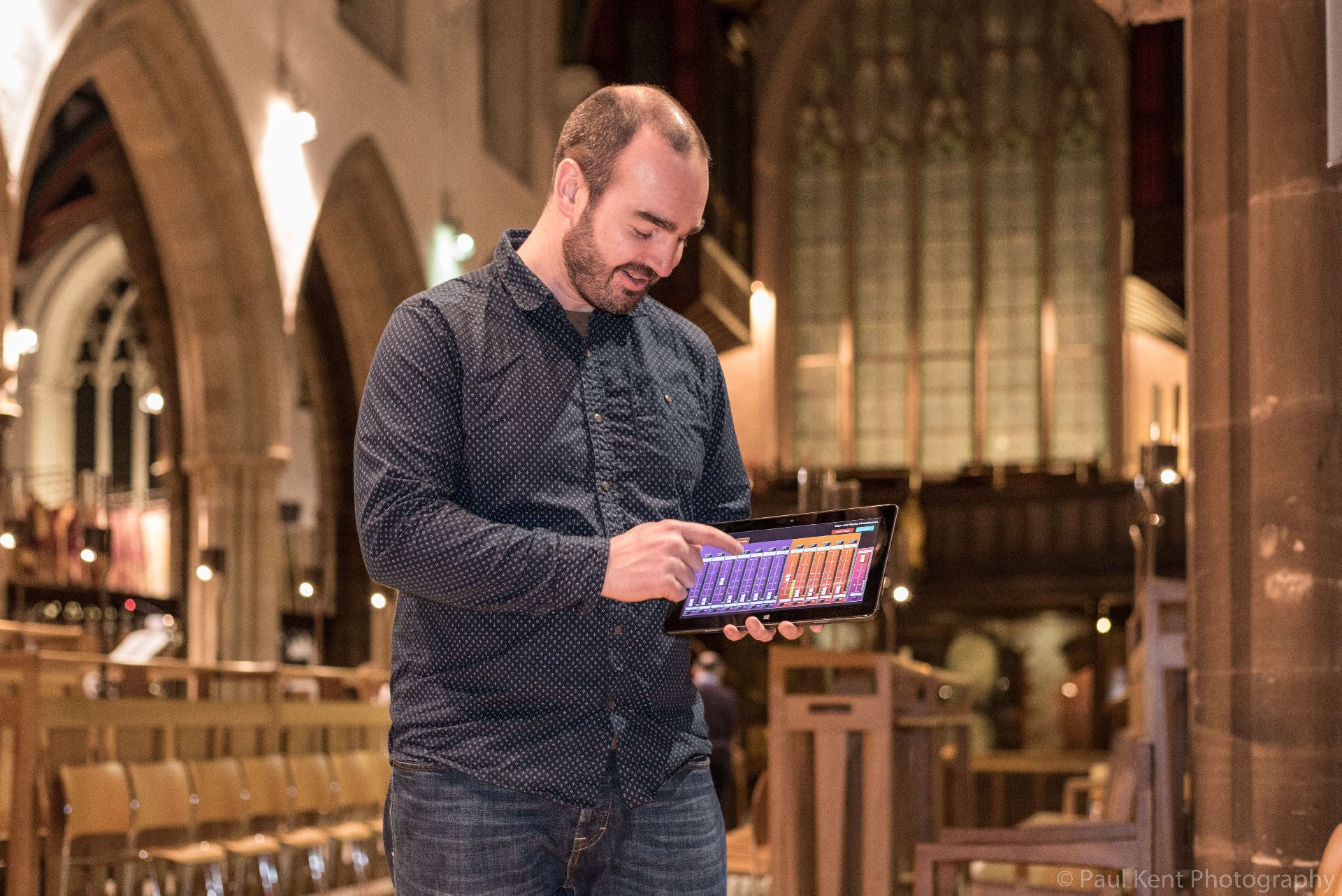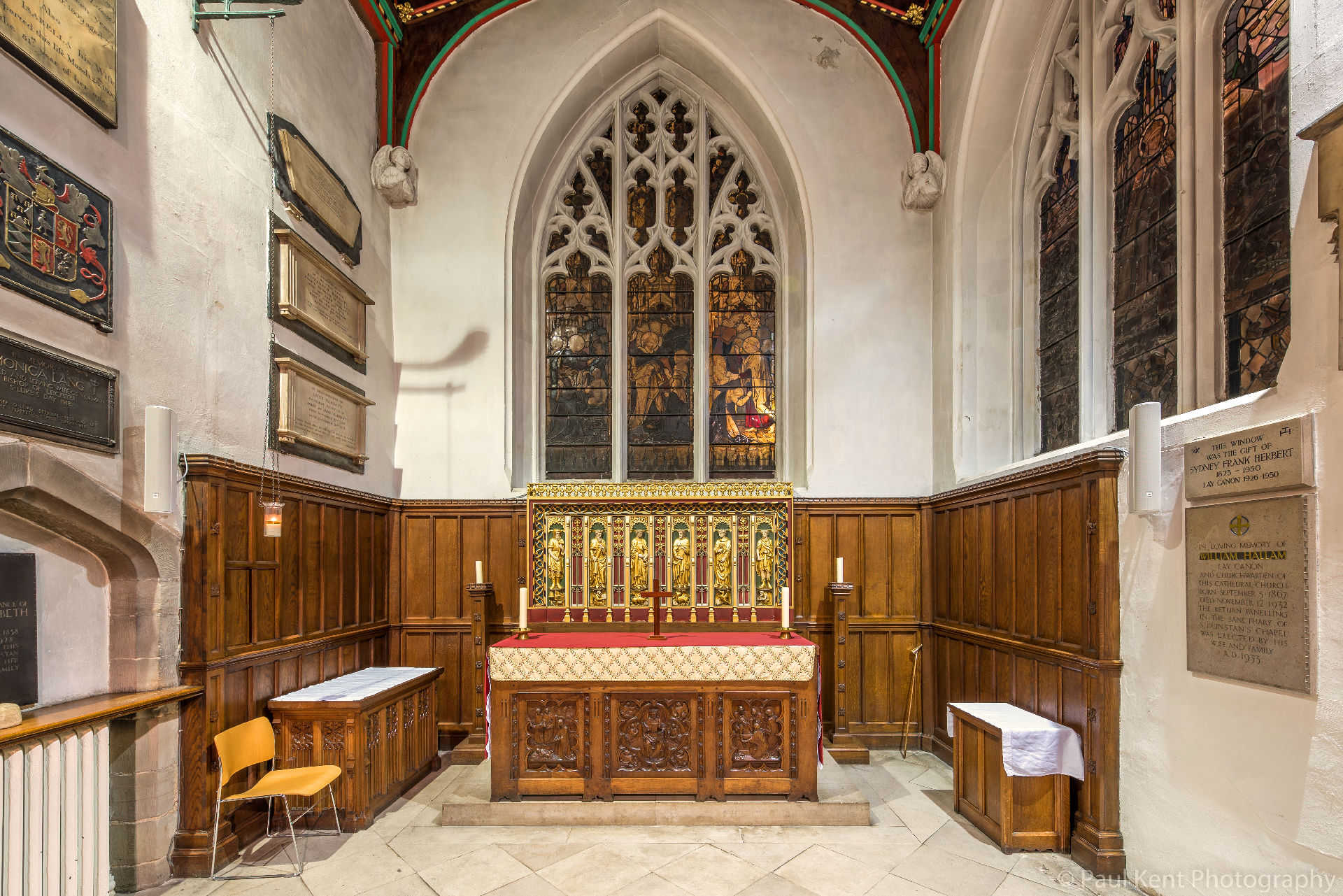How did FuzzMeasure help you redesign Leicester Cathedral’s massive A/V system, a multiple-zoned speaker array?
I wasn’t particularly looking forward to the task of setting delays in Leicester Cathedral. The setup there is such that there are speakers all over the building, but the building is zoned into a main worship space and several side chapels. The cathedral can be used as one large space, six or seven small spaces, or any combination in between.
For a normal Sunday service, the main area of focus is in the centre of the cathedral, so that becomes the ‘zero point’ that all other speakers are delayed back to, but during the week a service can take place in any of the side chapels around the edge of the cathedral, and must be relayed all over the rest of the building. This complexity of use means that the ‘zero point’ changes all the time, so setting delays was quite a complicated affair. Using FuzzMeasure though, Rob "Robot" Allen (NoiseBoys' regular freelance engineer) and myself were able to set the entire system up in an hour from beginning to end, with multiple delay times for every scenario calculated and stored. It was far less painful than expected, and absolutely perfect first time.
What are common problems (and mistakes!) with designing sound systems for houses of worship?
Having a little knowledge about sound can be dangerous. There's always someone in a congregation who knows a bit about sound, is in a band or knows computers, who takes on the responsibility of the audio. Some of these people really know what they're doing, and that's great, but a lot don't! Once someone's seen what they believe to be the perfect product on the Internet it's hard to convince them to spend more on what they actually need sometimes! The Internet is awash with cheap tat, all claiming to be the best thing since sliced bread, and our job is partly to help people navigate through that to get to what they actually need.
The limitations imposed on designing audio for churches always start with the building. There are roughly three categories of church buildings in the UK; modern purpose built churches, warehouse conversions and traditional churches, which could be hundreds of years old. Each carries its own challenges, but it's rare to find any style that was designed with amplified audio in mind.
Older churches were designed with choral music in mind so sound is electrifying when there's a choir singing, but it's a challenge for big loud speakers. Modern purpose built churches are designed to look nice, but architects rarely design spaces with audio and acoustics in mind.
The warehouse conversions are usually associated with the most modern styles of worship with full bands, drum kits, guitar amps and a lot of amplification. Yet these conversions increasingly have external noise restrictions due to them being in residential areas. What this means is that the warehouse churches are designed to keep as much sound inside as possible, which is a massive problem for the acoustics inside. We've been in brand new conversions that sound worse than the largest cathedrals due to the massive amounts of reflected sound inside!
Finally, modern churches are very keen to get a kicking system where music sounds great, but often neglect the value of the clarity of spoken word. Time and again we hear systems that are fine for a six-piece band, but can't cope with a lapel mic. When every week people gather to hear a sermon preached and spoken word for at least half of the service, we need to be designing systems with that at the forefront. Similar to the older churches, small, focused speakers are needed to direct the sound specifically to where the people are.





